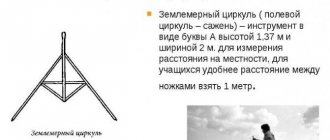Every year, a large number of families solve their housing problems by buying a new apartment or building a new house. But for many families this issue remains acute and open, since real estate is expensive and not everyone can buy it.
In this case, there is great hope of receiving housing from the state, for example, under one of the housing programs. One of the conditions for obtaining an apartment is an insufficient number of square meters for each family member.
There is a standard norm adopted in the Russian Federation for area per person, it is valid in all regions, and is one of the factors for registering for obtaining an apartment from the state. How many square meters per person?
When do you need to calculate the living standards? How is it determined?
There are several cases when the standard for living space must be taken into account.
- If necessary, confirm the tenant’s right to receive additional space.
- When temporary residents move in.
- Relocation of the tenant during major renovations in the building.
- The real estate property is being divided.
- The tenant is being evicted.
- You need to pay rent for living space.
The Housing Code of the Russian Federation has Article 50, which is devoted to this issue. This text states that the accounting standard for the area of residential premises is the minimum size of the area of living premises, on the basis of which the level of provision of citizens with the total area of living premises is determined in order to register them as those in need of residential premises. The indicator remains at different levels in different regions and subjects. In the constituent entities of the Russian Federation, responsibility for setting individual standards falls on the shoulders of local authorities. The size of such a norm cannot exceed the size of the provision norm established by this body.
What is the minimum living space per person?
Considering everything said above, we can conclude that the minimum area allocated to 1 person cannot be less than 18 sq.m. It should be borne in mind that in this case we are talking about common, not living space. These are different concepts. So, for example, the total area of an apartment can be 60 sq.m., of which only 45 sq.m. are residential.
The rest of the space is the kitchen, bathroom, pantry, dressing room, and so on. Based on this, we can conclude that the actual living area of each resident will be less than 18 sq.m. It is assumed that the non-residential space assigned to it is the space occupied in the kitchen, bathroom, and so on.
Federal norm standards
At the level of federal legislation, the rules are defined as follows.
6 square meters per person is the norm for living space, according to sanitary rules.
Social norms for total area are calculated as follows:
- If there is one tenant living alone, he is allocated an area equal to 33 square meters .
- 42 squares is the minimum required for two people.
- If a family consists of three people, then each of them should receive at least 18 squares . But in any case, they must receive at least 16 squares at their disposal .
Bottom line
Of course, there are many rules, they are very different from each other and it is easy to get confused in them, but all the information can be summarized in three definitions :
- accounting norm - the number of meters allocated to a citizen so that he can stand in line for another housing;
- provision rate - the minimum living area for a citizen or family provided by the municipality;
- sanitary standard - a standard for flexible housing and hostels, applied when evicting defaulters or temporary accommodation of citizens during the period of renovation of their main housing.
As can be seen from the article, the concept of “housing standard” is very complex and ambiguous. Specific values vary by regional authority and may be determined by contacting the appropriate office or department in your region.
There is even more information about housing area standards in this video:
What is a social norm? How is it calculated?
The social norm is the minimum necessary housing that must be allocated to the population when the housing stock is distributed among them.
Social norms reflect the minimum amount of space a person needs to live comfortably. This is the main reference point for those who are responsible for allocating housing subsidies and housing under other programs.
The norm is tied to several factors, including:
- Information about what types of accommodation premises belong to.
- Data on the provision of housing to the population, taking into account the characteristics of a particular region
- Information about how many people make up the family.
Subsidies and benefits
A subsidy is financial assistance from the state when paying for utilities . Legislative acts define certain categories of citizens entitled to receive such payments and their amount.
This category includes large families, pensioners, veterans, participants in combat operations in “hot” spots, etc.
Low-income families wishing to receive this subsidy must meet 2 requirements:
- have a total family income below the level established for their region;
- have a smaller room area than established by the social norm.
Outdated standards
Articles on similar topics regularly mention the standard of 12 sq.m. established by the housing code . However, Article 38, which the authors often refer to, is not from the current code, but from an outdated one that has lost force.
Among the current norms, the specified norm is 12 sq.m. does not exist.
More information about calculation rules
Classic standards: 18 square meters per citizen, 42 square meters for a family of two, 33 square meters for those who live alone . And enters into a social rental agreement. According to the norm, one person should receive at least 12 squares . But this is only relevant for those who are recognized as in need of improved housing conditions.
These are citizens who live in apartments that do not comply with current standards. The norm is set by municipalities. They necessarily take into account the actual condition and current structure of the housing stock. The same applies to the number of premises that can be included in the housing stock to increase it.
Why is it necessary to ration living space?
In our country, living space standards began to be introduced at the beginning of the 20th century. in connection with revolutionary processes and the First World War. These events left many of our fellow citizens homeless. In addition, after the onset of peacetime, the population of cities began to grow rapidly. During this difficult period, the Soviet authorities adopted the first resolutions aimed at providing housing for workers.
Nowadays, rationing of living space is carried out for the following purposes:
- First of all, this is necessary to determine how many square meters of housing are required per person so that their living conditions can be considered acceptable.
- If a citizen has the right to apply for a subsidy, its size is determined based on the ratio of the actual area of his apartment to the area that he is entitled to according to the law.
- In a situation where the owner of an apartment plans to register other persons in it, it is necessary to first calculate whether the number of residents registered in it will comply with the square footage standards.
- To determine the amount of payments collected for the provision of utility services and resolve the issue of providing benefits.
- If, based on the results obtained from the Federal Migration Service, it is determined that there are more residents living in the apartment than are allowed to occupy it according to current standards, a check may be ordered to determine whether all of them were accommodated in it legally.
About the accounting standard for housing
Determined by local authorities. Calculation of this norm requires consideration of many factors:
- Demographic and social composition of registered families.
- Features of the housing stock itself.
- The provision of housing for the population in a particular region.
- And so on.
In each region, this norm has a certain size , which is determined individually. The accounting norm can be changed for specific groups of citizens, including military personnel and disabled people. But a decrease or increase in the accounting rate occurs only on the basis of a Federal Act. Important documents for this are the laws of the subjects themselves, or decrees of the President of the Russian Federation.
An accounting standard is needed to understand whether specific citizens need to improve their living conditions. In this case, not only the territory of living rooms is taken into account, but also the so-called common areas.
Is it possible to specifically reduce the area?
Some people, in order to improve living conditions even more, deliberately worsen them for the commission.
Example: Usually 2 people live in an apartment. The area available for each of them is quite sufficient and therefore such a family cannot register. But I still want to get a new apartment. In such a situation, they register other relatives in the housing in order to formally reduce the living space for each resident.
Despite the fact that the legislation does not clearly describe actions that may or may not be considered as deliberate deterioration of living conditions, most often each such situation is considered individually.
Based on the results of the review, if violations are identified, the applicant will be refused consideration of his application. Moreover, after such a refusal, he will not be able to participate in such government programs for the next 5 years. Regardless of whether his living conditions worsen due to natural reasons in the future or not.
In some cases, the deterioration is involuntary. The simplest example: a wedding and the birth of a child. There was enough space in the apartment for one person. After the wedding and the spouse moved in, it became not enough, but it was still sufficient, from the point of view of standards. But after the birth of the child, there was absolutely not enough space.
It is very difficult or even simply impossible to understand the standards, determine the area and achieve participation in the program for improving housing conditions without the help of an experienced lawyer. During a free consultation, qualified specialists will analyze the most important nuances and tell clients what they should consider first. Lawyers can also represent the interests of the applicant both when applying to government agencies and in court, if it comes to it.
FREE CONSULTATIONS are available for you! If you want to solve exactly your problem, then
:
- describe your situation to a lawyer in an online chat;
- write a question in the form below;
- call Moscow and Moscow region
- call St. Petersburg and region
Save or share the link on social networks
(
1 ratings, average: 5.00 out of 5)
Author of the article
Natalya Fomicheva
Website expert lawyer. 10 years of experience. Inheritance matters. Family disputes. Housing and land law.
Ask a question Author's rating
Articles written
513
- FREE for a lawyer!
Write your question, our lawyer will prepare an answer for FREE and call you back in 5 minutes.
By submitting data you agree to the Consent to PD processing, PD Processing Policy and User Agreement
Useful information on the topic
3
Living conditions inspection report
Living conditions in many families remain far from regulatory requirements...
1
Intentional deterioration of living conditions
Housing problems can be solved in different ways, one of which is...
Standards for various categories of citizens
The norm for military family members is 18 square meters per person. In practice, housing standards for this category of citizens are often increased.
The social norm for housing assistance is used when determining whether citizens are able to pay for housing and communal services themselves, or whether they require support. In a dormitory, the rate per person may be reduced depending on the decision of the municipality.
Eviction for debts to pay utility bills is an extreme measure that applies to those who live in an apartment or house under a social rental agreement. They are necessarily evicted to housing with a smaller area. The same standards are used here as when working with dormitories - that is, for example, 6 square meters per person.
When relocating from emergency housing, the norms are 6 square meters per person, if the municipal fund does not have enough funds to provide all conditions. In other cases, migrants can count on a minimum of ten square meters.
Those whose housing is seized for the benefit of state and municipal funds can count on the same standards, no less.
Peculiarities
These housing standards were adopted several decades ago; the legislation on this issue has remained virtually unchanged.
But regional authorities could make changes, this needs to be taken into account. If a family or single person wants to apply for housing assistance from the state, to receive a subsidy for utility bills, you should check the current housing standard in your region. There are categories of the population that can receive compensation when their living conditions change for the worse. This rule applies to family members of Chernobyl victims and labor veterans.
The reality is that not everyone in need can receive a spacious and comfortable apartment from the state in the near future; many have to wait many years for their turn. Therefore, families are looking for opportunities to buy housing on their own by raising funds or taking out a mortgage. In this case, you can also obtain a loan subsidy.
When a citizen is evicted for non-payment of utilities, he can receive living space in the amount of 6 square meters. m. if there is an eviction from a dilapidated house that is municipal property, housing with an area of up to 10 square meters is issued. m per person. If we are talking about moving from a privatized apartment, the area of the new housing should not be less than the area of the previous one.
When allocating housing, not only the standard area can be taken into account, but also the gender of the people being occupied. Two people of different sexes can live in one apartment, and they are not spouses. In this case, the housing must have two rooms.
Video: How much do they pay a large family in Moscow?
Exceeding social standards for the allocation of housing often happens . For example, in a family there are two children of different sexes, according to the law, such a family must be allocated a three-room apartment - children cannot live in the same room with their parents, and each of them is entitled to a separate room.
What else should you consider?
Over the past few years, this area in the legislation of the Russian Federation has undergone virtually no changes. If the norms become different, it is only within a specific region; the amount of change is rarely large. But more often than not, even other cities repeat the same rules that apply in Moscow.
Rationing of living space began in our country since the times of the USSR. And many of the rules in force at that time are still applicable to practice today. Even after changes, they are simply transferred to new documents. Only the government bodies responsible for editing in a given case change.
It is worth considering that some categories of citizens have the right to receive compensation. For example, if they and their family members were injured during the accident at the Chernobyl station. Compensation is especially relevant for those who are interested in the opportunity to save on utility bills. Labor veterans who permanently reside in housing stock also have this right. Regardless of what form of ownership they register for a particular object.
Many citizens can independently improve their living conditions. But for some, government support remains relevant. If there is an opportunity to get housing on preferential terms, why not take advantage of it?
What to do if the area is less than the standard
If, as a result of the calculation, it turns out that the area in the apartment is less than the standard, registered persons can apply for improved living conditions. In practice, it is almost impossible to achieve real changes without the help of an experienced lawyer. That is why it is recommended to first consult with a specialist and only then, based on his recommendations, take certain actions.
Procedure
The procedure may vary slightly depending on the region and the specifics of the application. Below is a generalized version that is relevant for almost all situations:
- Check the established standard for living space with the real state of affairs. If, based on the results of the calculations, it turns out that for each registered housing there is less than required, you can move on to the next step.
Calculation example: Let's assume that the total area of the apartment is 50 sq.m. (can be viewed in the certificate of ownership, extract from the Unified State Register of Real Estate, registration certificate or purchase and sale agreement). A family of three lives in it. Each of them should have 18 sq.m. In total, the total area of the apartment should be 18*3=54 sq.m. At the moment, each person has only 50/3 = 16.7 sq.m., which is less than the norm, albeit a little. Under such conditions, you can try to register in order to improve your living conditions.
- Contact the housing inspectorate or social welfare authorities (it is better to check with the local administration where exactly to contact) and write an application for registration.
- After acceptance of the application, a date and time will be set for inspection of the housing to determine its compliance with standards and requirements.
- Ensure unimpeded access to the apartment for members of the commission at the specified time. It should be taken into account that, most likely, photography and video will be taken. You can refuse this, but it is better to be as loyal as possible to the specialists and allow them to do whatever they see fit (within reasonable limits, of course).
- Receive an inspection report.
- Based on the inspection report, if the conclusion suits the applicant, register. If you are not satisfied (and do not allow you to register), you can try to challenge the results of the premises inspection.
- Wait until money is allocated or resettlement becomes possible.
As practice shows, you can wait for your turn for several years. It is often possible to speed up the procedure with the help of an experienced lawyer.
Documentation
To submit an application you may need the following documents:
- Passport of the applicant and all members of his family. If you have not yet received a passport, then a birth certificate will do.
- Extract from the USRN for housing.
- Registration certificate for the apartment.
- Legal documents.
- Certificate 2-NDFL and other documents showing the financial condition of the family (not relevant in all cases).
Costs and deadlines
Registration to improve living conditions, as well as the inspection of the apartment itself, are free of charge. Costs may arise when collecting documents (for example, if you need to restore a registration certificate or a sales contract).
From the moment of submitting the application to the verification, it takes from several days to 2-3 months. On average - about 1 month. After the act is drawn up in accordance with all the rules and provided to the applicant, he will have 30 days to use it for its intended purpose (become registered). If this is not done, you will have to repeat the procedure, since the act will no longer be valid.
In addition, if for some reason the applicant is not satisfied with the document, he can challenge it within 10 days from the date of receipt of the document.
Accounting standard for residential area in the Leningrad region
The accounting norm in the Leningrad region is set at 9 to 12 square meters. m. (and 15 sq. m. for a communal apartment) depending on the territory.
The dimensions of the accounting standard for the area of residential premises, established by decisions of the legislative bodies of local self-government of the Leningrad region using the example of some municipalities:
- Sosnovy Bor city, Leningrad region - 12 sq. m. of total area per person (Decision of the Meeting of Representatives of the Municipal Formation “City of Sosnovy Bor” of the Leningrad Region dated March 28, 2005 N 35 (as amended on October 28, 2008);
- Boksitogorsk urban settlement of Boksitogorsk municipal district of Leningrad region - 9 sq. m. and less than the total area of living space per person (Decision of the Council of Deputies of the municipal formation Boksitogorsk urban settlement of the Boksitogorsk municipal district of the Leningrad region dated February 22, 2006 N 34);
- Volosovskoye urban settlement of the Volosovsky municipal district of the Leningrad region - 9 sq. m. (Decision of the Council of Deputies of the municipal formation Volosovskoye urban settlement of the Volosovsky municipal district of the Leningrad region dated February 16, 2006 N 33);
- Volkhov city, Leningrad region - 9 sq. m. of total area per person (Decision of the Municipality of the city of Volkhov, Leningrad Region dated October 4, 2005 N 38);
- city of Vsevolozhsk - 10 or less square meters. m. of total living space per person (Decision of the Council of Deputies of the municipal formation “City of Vsevolozhsk” of the Vsevolozhsk municipal district of the Leningrad region dated May 26, 2020 N 27);
- Vyborg urban settlement, Vyborg district, Leningrad region - 9 sq. m. (Decision of the Council of Deputies of the municipal formation Vyborg urban settlement of the Vyborg district of the Leningrad region dated February 28, 2006 N 43);
- city of Gatchina - 12.0 sq. m. of total area per person (Decision of the Council of Deputies of the municipal formation “City of Gatchina” of the Leningrad Region dated June 29, 2005 N 22/1);
- Kingisepp urban settlement of the Kingisepp municipal district of the Leningrad region - 9 or less square meters. m. of total area per person in a separate apartment, residential buildings and 15 sq. m. and less than the total area in a communal apartment (Decision of the Council of Deputies of the municipal formation Kingisepp urban settlement of the Kingisepp municipal district of the Leningrad region dated 02/10/2016 N 158).
Who should be considered poor?
The Housing Code of the Russian Federation does not establish who is considered low-income, since the standard of living in different regions of Russia varies significantly. At the same time, the Housing Code of the Russian Federation names two criteria that must be followed when deciding who should be considered poor.
For the purposes of the RF Housing Code poor citizens are citizens if they are recognized as such by a local government body in the manner established by the law of the relevant constituent entity of the Russian Federation, taking into account the income per family member and the value of property owned by family members and subject to taxation (Part 2 Article 49 of the Housing Code of the Russian Federation).
In other words, the following citizens should be considered poor:
- having low income per family member. The income limit, below which a citizen can be considered low-income, is established by local governments;
- with low income, who do not have property subject to taxation above a certain value. If, for example, a family has a very low income for each family member, but one of them has an expensive country house, then such citizens will not be considered low-income.
The laws of the constituent entities of the Russian Federation should establish the procedure for recognizing citizens as low-income and determine how citizens confirm that they are low-income: what documents confirm the composition of the family, the income of each family member; how to calculate the income per family member; what documents must be submitted about existing property subject to taxation, and how its value is determined, etc.
Under a social rental agreement, housing can be provided not only to the poor, but also to other citizens specified in the law (for example, participants in the Great Patriotic War, military personnel, judges, prosecutors, etc.). The corresponding instructions may be contained both in federal laws and in the laws of the constituent entities of the Federation and, in addition, in the decrees of the President of the Russian Federation. See below for more details.
Accounting standard for residential area in Moscow
In accordance with Art. 9 of the Moscow Law of June 14, 2006 N 29 (as amended on February 20, 2019) “On ensuring the right of Moscow residents to residential premises,” the accounting norm is set at 10 square meters of living space for individual apartments.
The accounting norm is set at 15 square meters of living space for apartments in which residential premises are provided by decisions of the authorized executive authorities of the city of Moscow to different families.
Right to additional meters
There is an exact list of persons entitled to additional meters, therefore, when making a social tenancy agreement, providing a hostel or allocating an apartment, this indicator is taken into account in the total area or they are offered an additional room.
Full list:
- heroes of Labor of the Russian Federation, holders of the Order of Labor Glory of all degrees - additional 15 m2.
- federal judges - plus 20 sq. m.;
- heroes of the Soviet Union, Heroes of Russia and full holders of the Order of Glory - 20 m2;
- disabled people - no more than 2 standards of provision in force in the city of their residence;
- Investigative Committee employees - 20 m2;
- police officers with the rank of colonel and above - 1 additional room (its exact area is not specified in the standards);
- judges of the Constitutional Court of our country - 20 m2;
- military personnel with the rank of colonel and above, unit commanders, military personnel with academic degrees, as well as some other categories of military personnel - from 15 to 25 m2 of official housing.
Example calculation for a federal judge with a wife and two children:
- social norms – 18 times 4 equals 72;
- add 20 meters and get 92 m2.
This is in accordance with federal law; local authorities have the right to add here those categories that the region especially needs.
How to calculate the standard area for 1 person in an apartment
This is a special procedure that may be required in different situations.
- If necessary, apply for subsidies to pay for housing and communal services. Usually, monetary compensation or discounts on housing and communal services are provided.
- When applying to municipal or state authorities for housing registration or if it is necessary to increase housing space on the basis of social tenancy agreements.
- If the housing is in a dilapidated building and citizens are to be resettled or the housing does not meet sanitary standards.
- In case of arrears in payment of rent or housing and communal services. Repeated cases of violations of the lease agreement were identified.
- The norm of living space per person in Moscow
is calculated when issues of temporary rental of municipal housing are being considered. - If a person requires confirmation that there is a need to expand the living space on the basis of current legislation.
- If a marriage is to be dissolved, and each spouse claims separate square meters.
The standards for housing provision in Moscow, the region and St. Petersburg differ from those for other cities.











